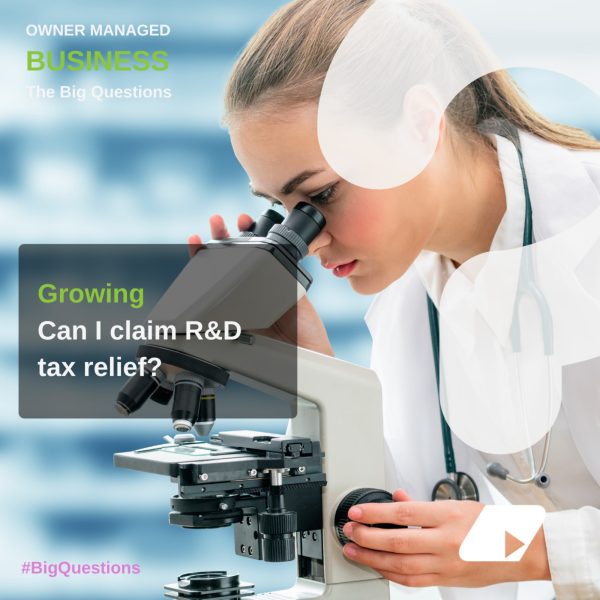Article
Research & Development and the construction sector
Article
Research & Development and the construction sector
April 21, 2020
3 minute read
Over 2,000 R&D claims were made by companies in the sector in the 17-18 tax year. However, the reality is that a large number of construction companies are performing R&D that qualifies for a credit but are not claiming for it.

Research and Development (R&D) tax reliefs were introduced by the UK government to reward companies for investing in innovative projects in science and technology. Billions of pounds worth of funds were highlighted for such relief in the last Budget (March 2020) and the definition of qualifying companies is still wider than most people expect.
Over 2,000 R&D claims were made by companies in the sector in the 17-18 tax year. However, the reality is that a large number of construction companies are performing R&D that qualifies for a credit but are not claiming for it.
R&D tax credits are a tax relief designed to encourage greater R&D spending, leading in turn to greater investment in innovation. They work by either reducing a company’s liability to corporation tax or by making a payment to the company. The construction industry is a highly innovative space as often there are exceptional circumstances on-site which need bespoke solutions and these solutions need to meet rigorous standards. The failure of such solutions can have disastrous and life-threatening impact as we saw with the Grenfell Tower tragedy.
New products, materials, processes and approaches can all count toward an R&D tax credits claim and what’s more, the Government is actively encouraging these claims to be made. The type of activities which qualify under the construction industry for R&D tax relief include:
- Modifying existing components and fittings into bespoke projects
- Developing new or improved equipment used in construction
- Performing offsite construction
- Integrating new or improved technology into buildings
- Integrating mechanical and electrical systems into buildings
- Creating, or experimenting with, new materials
- Coming up with new ways to implement energy saving techniques.
Examples of successful claims
A successful R&D claim was made by a company who created a cladding system which had the appearance of ‘normal’ brickwork but incorporated the capacity for off-site fabrication, improved fire protection and was suitable for fast-track production.
A company who specialised in constructing laboratories designed some new buildings with removable sections in order to avoid contamination. This meant that exterior walls could be slid away and a unit could be removed in total and replaced by a new unit before the exterior walls were slid back into place.
Reinvesting into your business
The average construction R&D claim is worth just over £50k and can be a lot higher. The cash R&D tax credits deliver can be invaluable for driving growth in a business or helping to protect you against economic challenges such as COVID pandemic we currently find ourselves in.
How Shaw Gibbs can help
The most successful claims for R&D Tax Credits deliver both strong methodology (that stands up to HMRC examination) and maximised benefit. There’s a lot of uncertainty around R&D so it really pays to seek specialist advice in making sure all your eligible costs are included.
We can help you identify eligible work and use our knowledge to help you maximise your company’s R & D claims. Therefore if you already know that you will qualify for R&D relief or you simply want to know if there is any company expenditure that may qualify, get in touch for a consultation.
Author:

Leigh Smith
Partner
Related content
Need expert advice?
Speak to an expert for advice on
+44-1865 292200 or get in touch online to find out how Shaw Gibbs can help you
Email
info@shawgibbs.com
Author:

Leigh Smith
Partner
Need expert advice?
Speak to an expert for advice on
+44-1865 292200 or get in touch online to find out how Shaw Gibbs can help you
Email
info@shawgibbs.com



